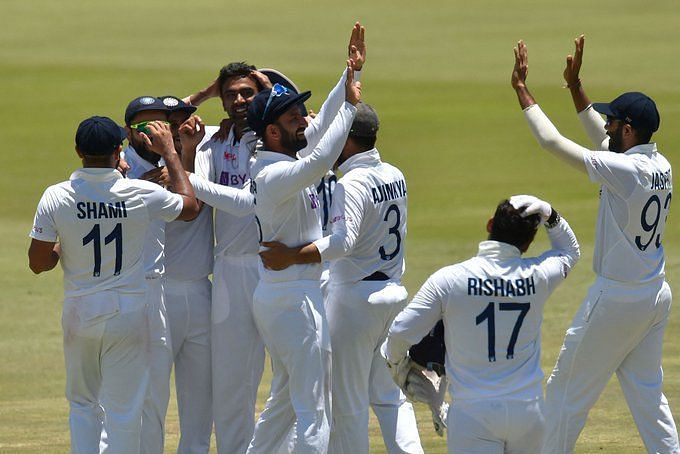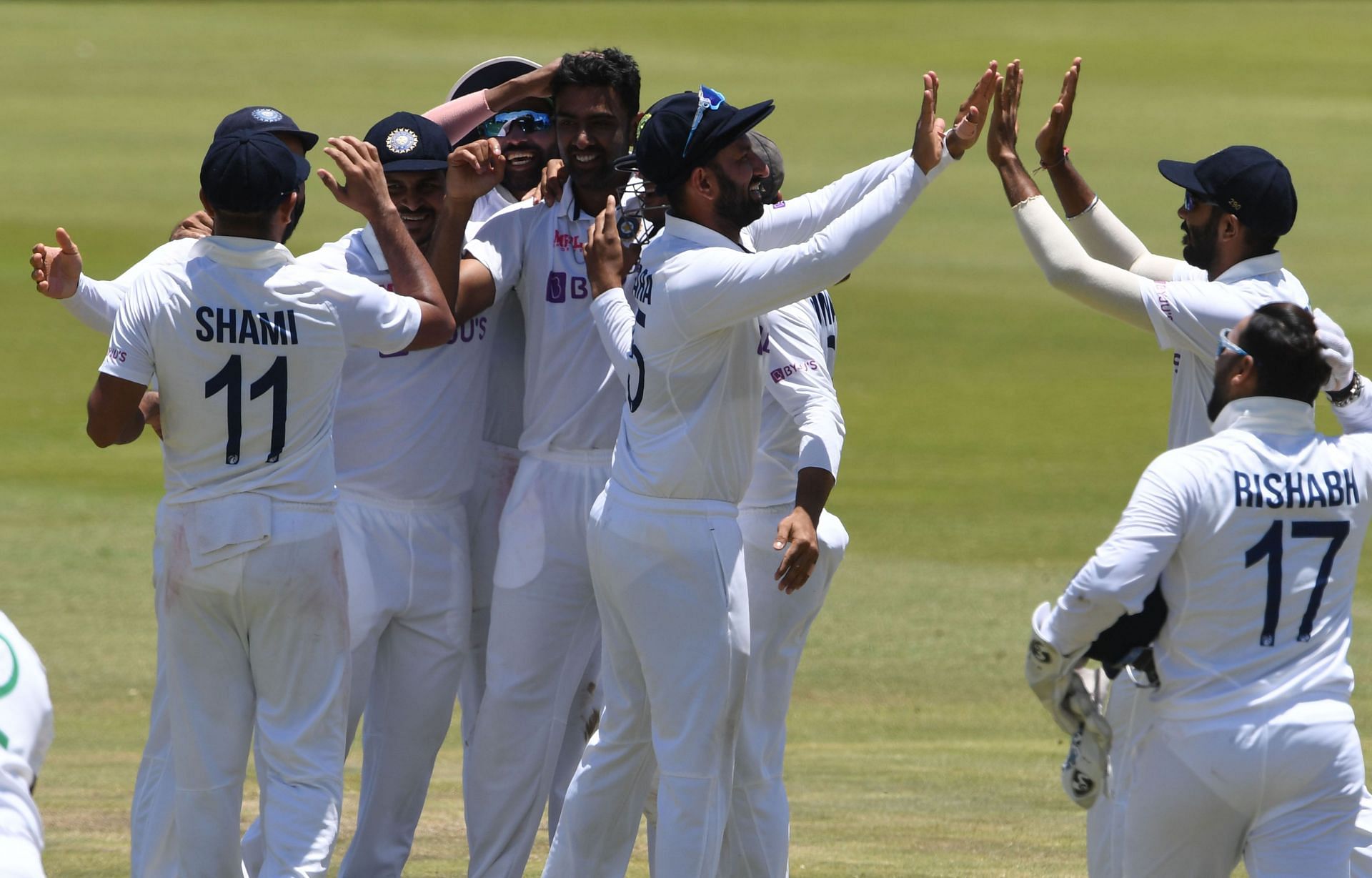
India, England and a Test batting year to forget
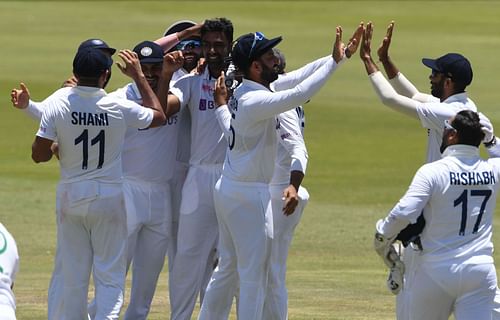
26th December, 2021, India win the toss at Centurion and, rather courageously, elect to bat first. The decision, which seems paradoxical to the green pitch on offer, makes a lot more sense when considering how rapidly the SuperSport Park strip deteriorates.
Nearly seven hours of cricket later, India are vindicated. Powered by KL Rahul, the visitors rack up 272/3 on Day 1 and fire an ominous warning shot to a relatively inexperienced South African team, who begin wondering if they’ll be the first home side since 2000 to lose at Centurion.
Torrential rains wash out the entire second day, meaning that the Proteas’ edginess, which began after India’s batting dominance, has increased exponentially. India, meanwhile, have their feet up and are waiting for the rain to relent so that they can drive home their advantage.
Day 3 comes about and anything but that happens, at least with the willow. India lose their last seven wickets for 55 runs and leave the door slightly ajar for South Africa to barge through. That India’s fast bowlers, like they’ve almost always done lately, slam the door shut, only masks what had been another insipid batting display.
A few hours earlier, in a different corner of the world (hello MCG), England contrived to do something similar. They were much better (or worse, depending on your allegiances) than India though, for they collapsed to 68 all-out in their second innings.
The more alarming bit, though, was there was a sense of inevitability attached to how England crumbled like a pack of cards. While Joe Root was at the crease, the Three Lions faithful felt that the game might stretch into Day 4.
Once the skipper departed, the fixture was done and dusted before Lunch – something that emphasized Root’s importance to the side but also illustrated just how ordinary the rest of the batters were.
In isolation, there might be a temptation to term these capitulations as a deviation to a long-existing and stronger batting pattern. However, when the trends, vis a vis 2021 are analyzed, it becomes clear that a lot of Test outfits, including England and India, have struggled woefully with the bat.
Since the start of the 21st century, there has been a lot of Test cricket. In the first decade of the century, it was widely assumed that batters had the wood over the bowlers. More recently, though, there has been a consensus that batters find themselves engulfed by a bowlers’ era – an era where pitches have been more responsive and bowlers have also added more strings to their bow.
Those claims aren’t completely baseless either. The flip side, though, is that it tells how the batting standards across the planet have dropped. In fact, barring a few, not many batters have been able to hold their own across conditions and in situations when the bowlers are on top.
Speaking of the stats in the 21st century, there has only been one worse year (2018) in terms of batting averages. Apart from 2020, which was affected by COVID-19, all these years have seen a minimum of 30 Test matches, meaning that there is enough of a sample space.
The batting averages, though, in the past four years (most recent first) are 28.78, 30.83, 30.83 and 27.58. These, by the way, also comprise the four worst batting averages in a year in the 21st century. A rung lower is 2017, hinting that this batting problem has persisted for far too long.
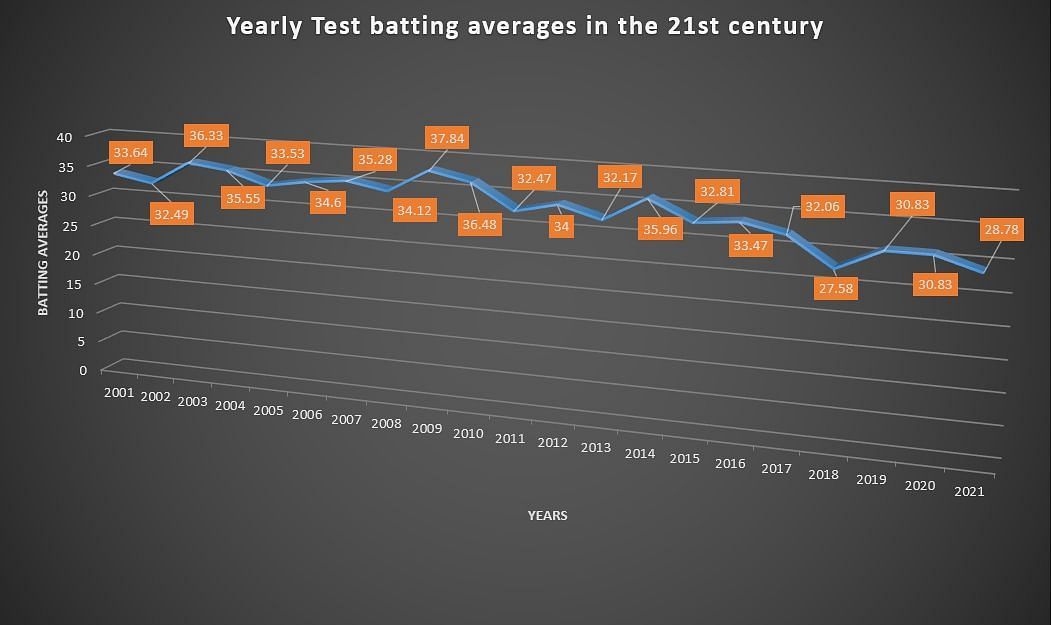
India's batting numbers in 2021 are quite shoddy
A similar picture is painted when specifically talking about India’s batting in 2021. In the 21st century, there have only been two worse years for India with the bat – those being 2020 and 2018. But the close proximity indicates why India have relied considerably on their bowlers in the recent past.
Interestingly enough, this slump has come about at a time when India have been reluctant to shuffle their middle order pack and have shut out the outside noise.
Ajinkya Rahane keeps finding ways to get out, irrespective of whether he has looked good before getting dismissed or not. He has, along with Virat Kohli (14 for Kohli), seen his average drop in 13 consecutive Tests. For those wondering, that is quite a lot, considering it has been spread across 2021.
Speaking of Kohli, he continues wafting at deliveries outside off stump and keeps feathering through to the keeper or the slip cordon. Cheteshwar Pujara, on the other hand, has been dismissed by loose deliveries and good balls, highlighting that he gets out too often.
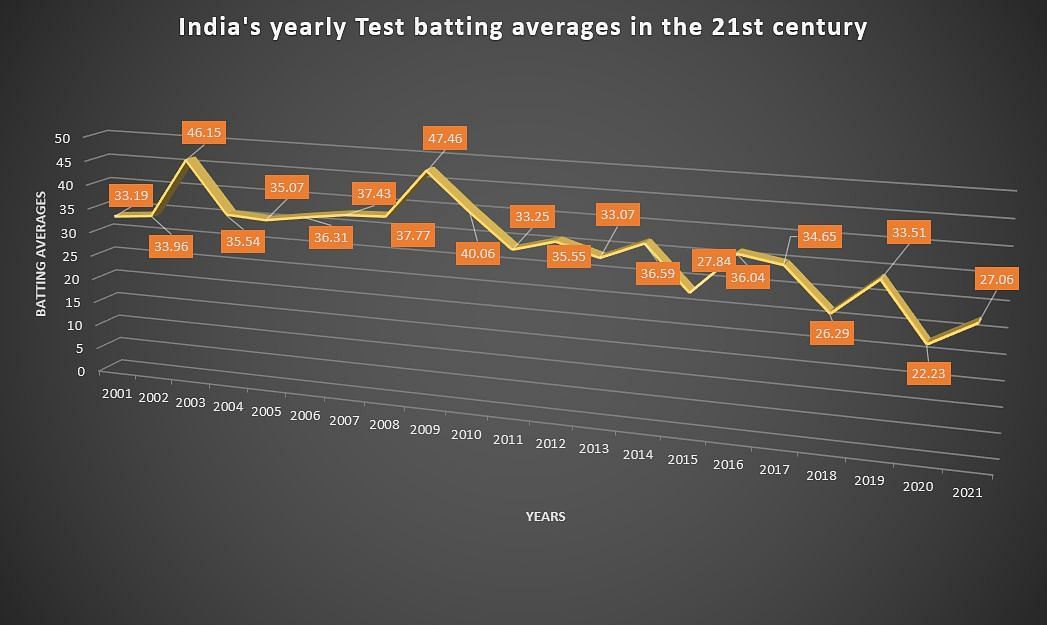
England, meanwhile, had ‘extras’ as their third highest run-scorer in 2021. They were shot out for under 200 on 13 occasions and mustered 54 (yes, you read that right) ducks throughout the year in Test cricket.
The lack of resistance, though, hasn’t been restricted to the aforementioned nations. New Zealand, when they toured India, were absolutely obliterated at Mumbai and scraped through to a stalemate at Kanpur. The West Indies weren’t any better when they landed in Sri Lanka, with the Islanders, for a change, being the team to instigate collapses.
Thus, a genuine case could be made that this habit has become contagious and at the cost of sounding absurd, even become the vogue.
A major explanation for this could be the lack of application batters have shown. The run-rate in 2021, which stands at 2.99, is also the worst that has been accumulated this century in Test cricket.
This, coupled with the poor returns, hint that batters are either too defensive or are too careless. There has been no middle ground and that has perhaps led to these capitulations. The less said about the innumerable idiosyncrasies batters boast and their defensive techniques, the better.
The other fashionable thing would be pointing fingers at the white-ball game (T20 cricket specifically) but that is a bridge that has already been burnt. And, of course, that is an element that can never be eradicated, meaning that batters and teams, in general, will have to figure out a mechanism.
As the year draws to a close, every team on the planet, whether it be England or India, might do well to introspect why things are going so wrong. And, more importantly, why they are turning pear-shaped so often.
2021 has truly been a Test batting year to forget but if the lessons aren’t learnt from what has transpired in the past few years, it is something that will continue. So much so that when a team loses only three wickets in a day and scores more than 270 – like India did at Centurion, it will be celebrated as much as a victory.
That, in itself, tells you things aren’t quite right.
